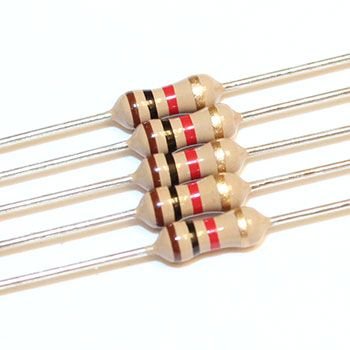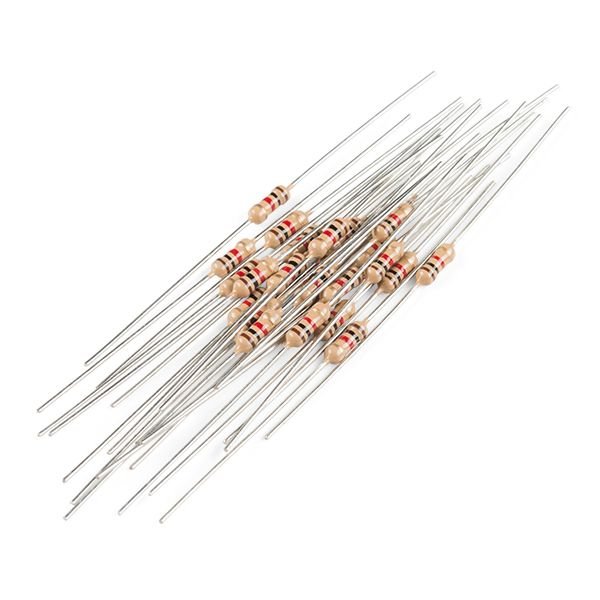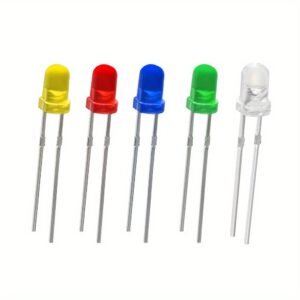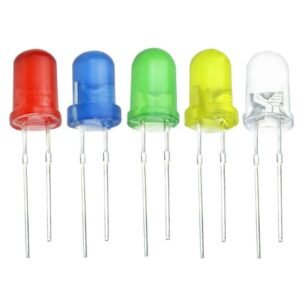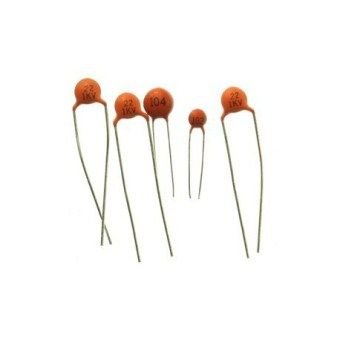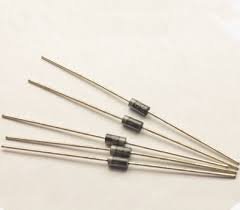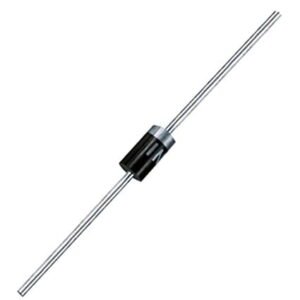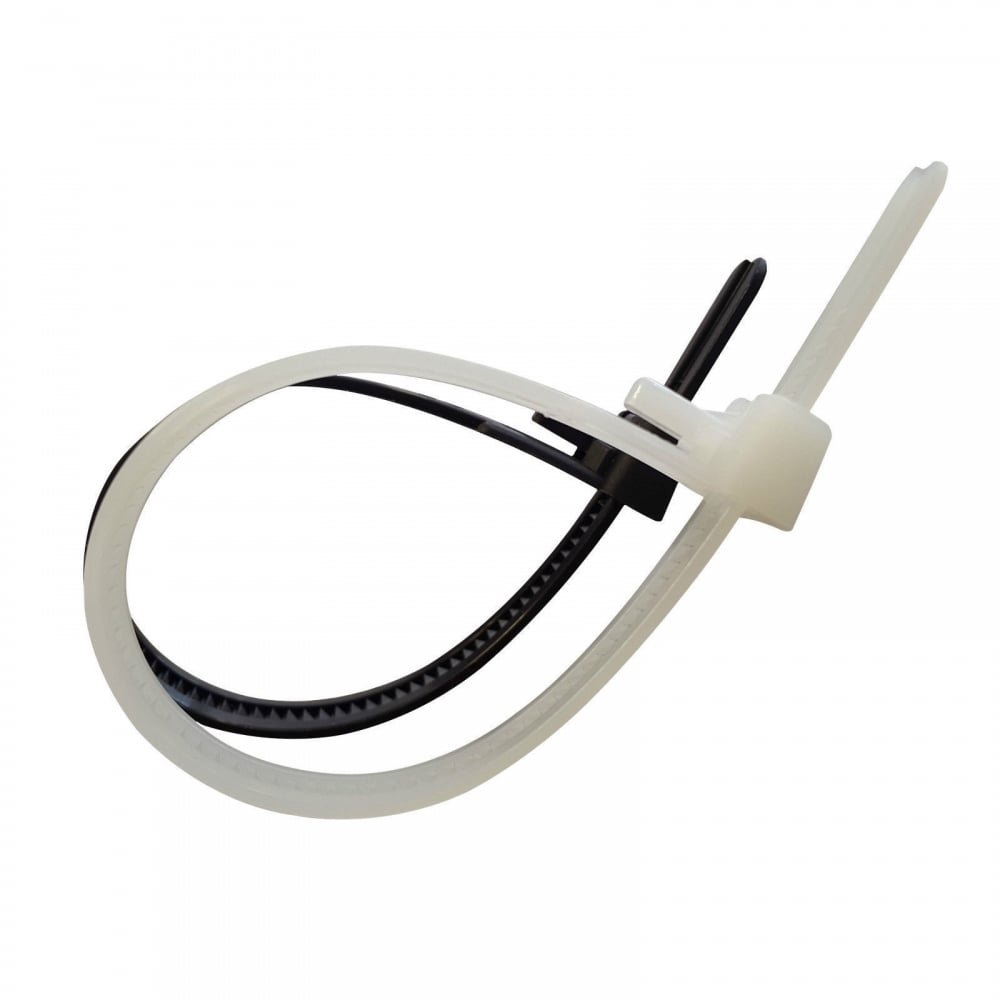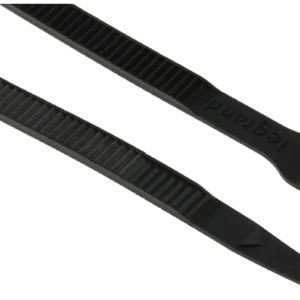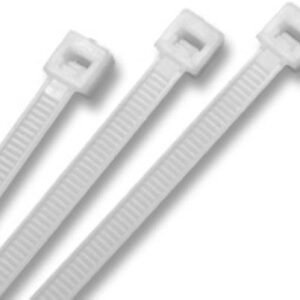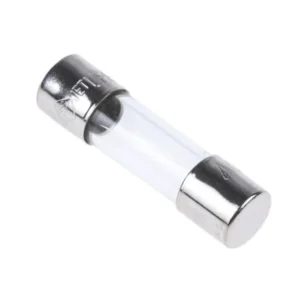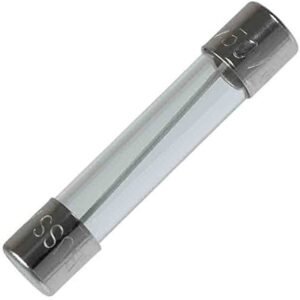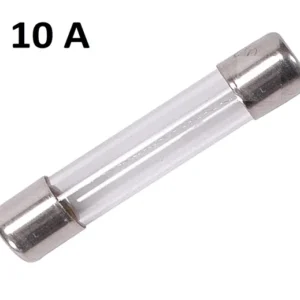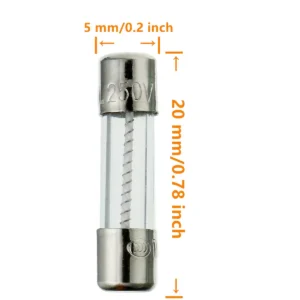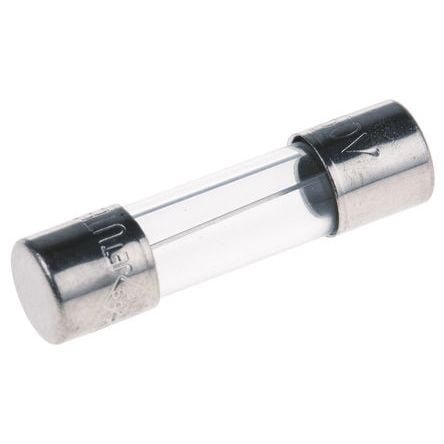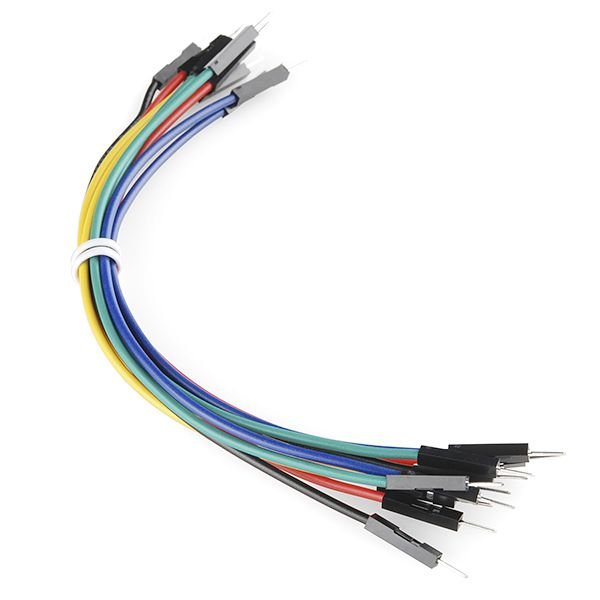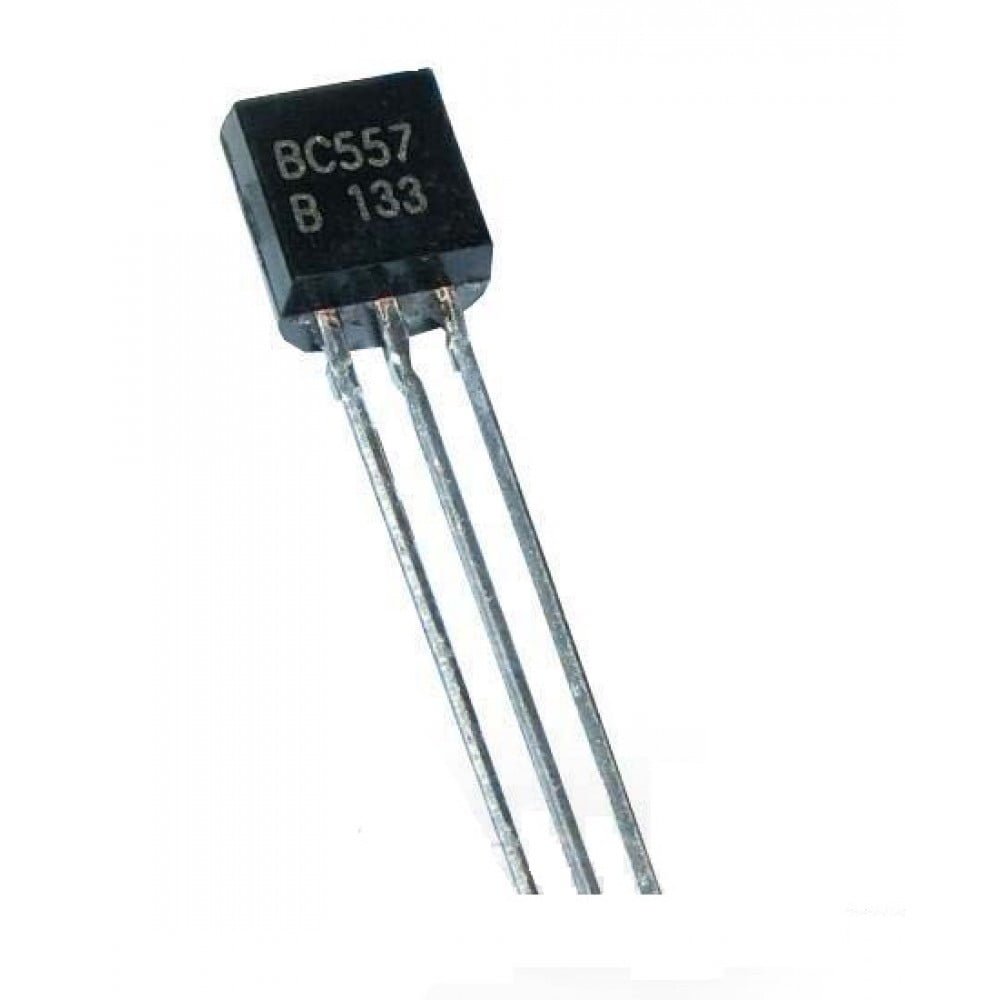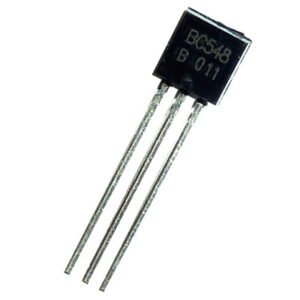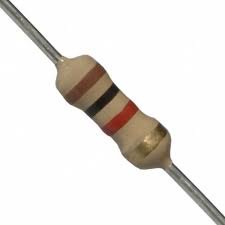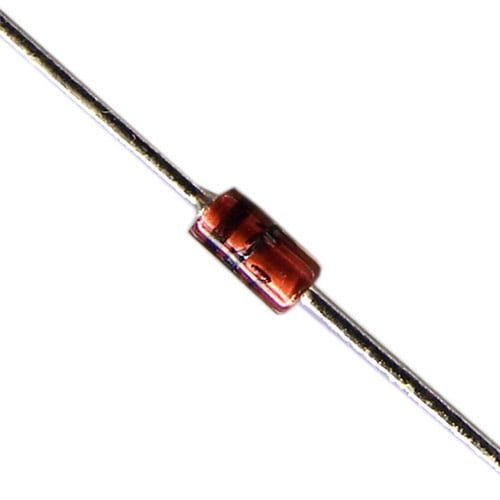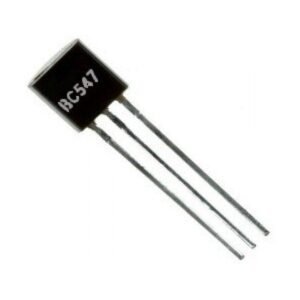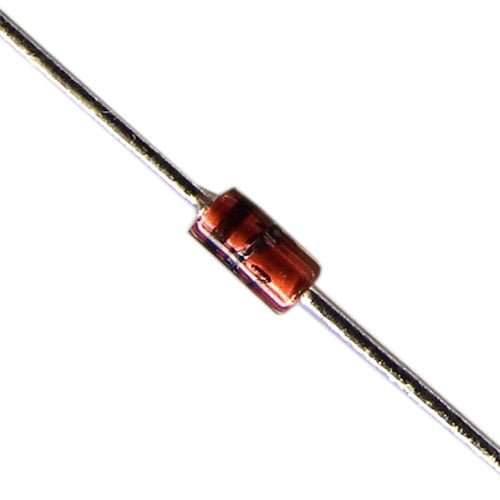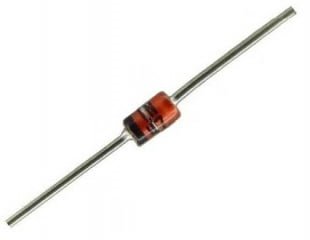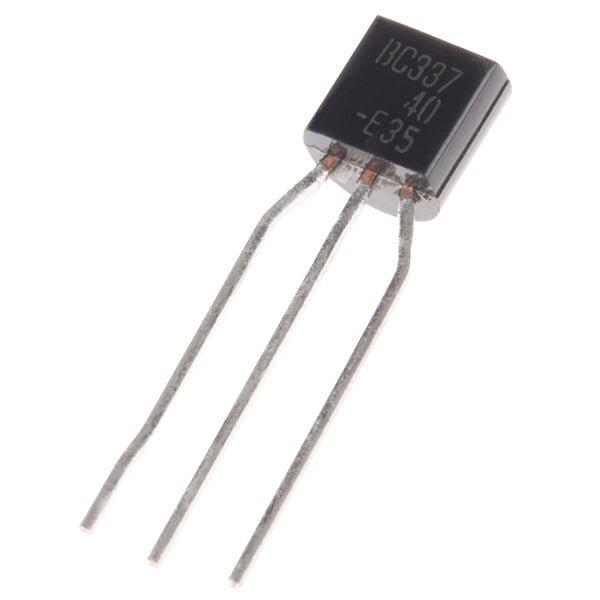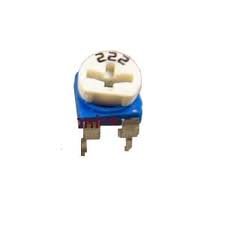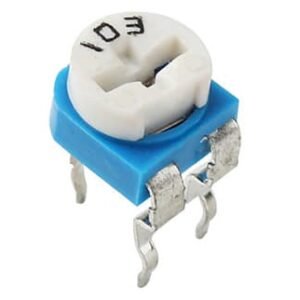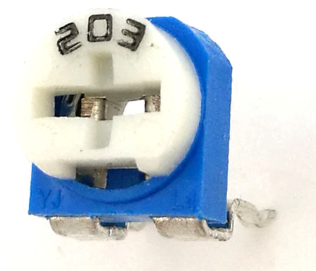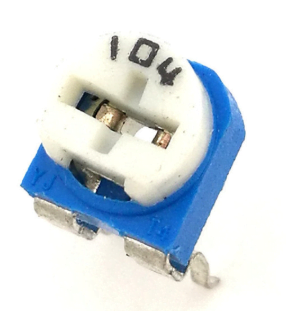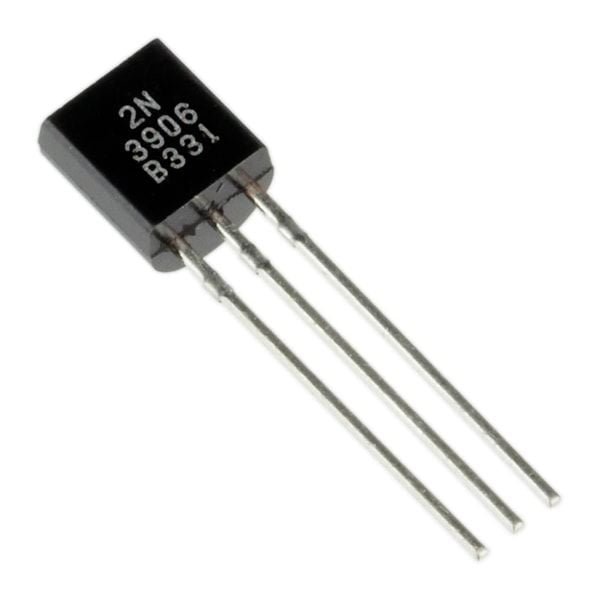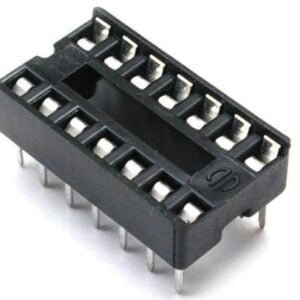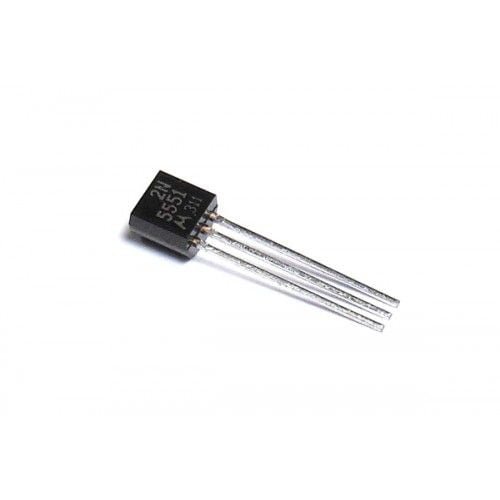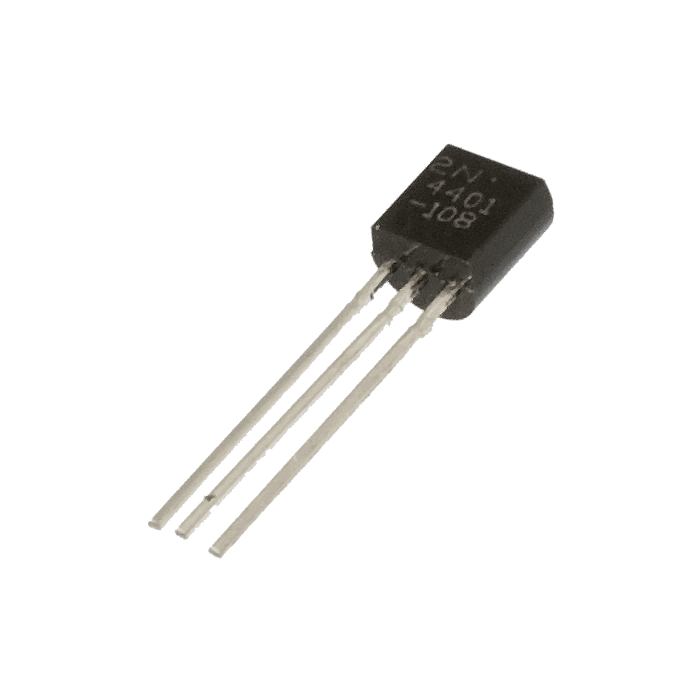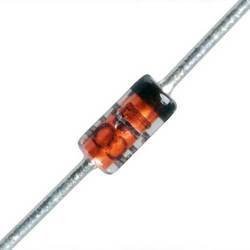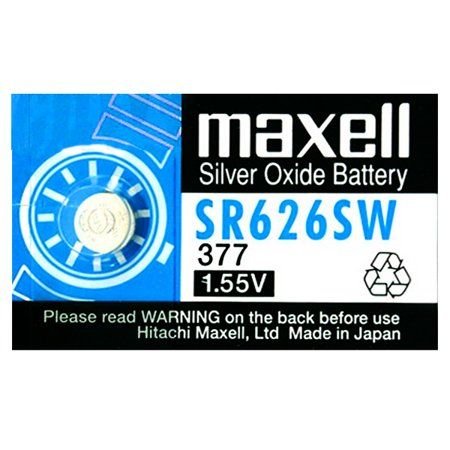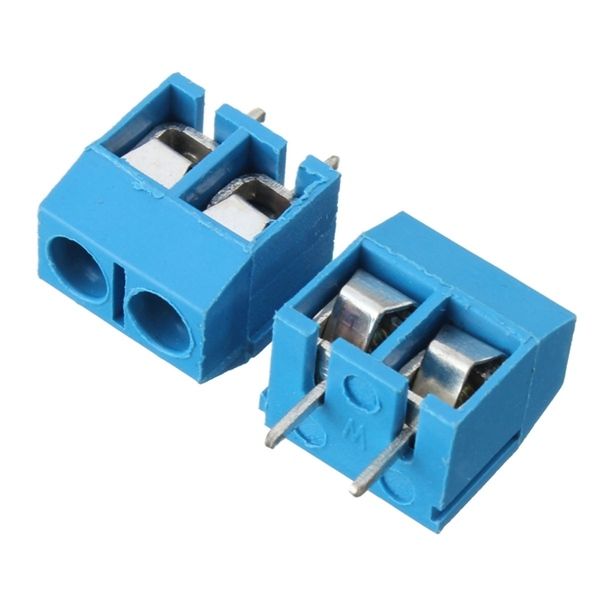-
SecuGen Hamster Pro V2 – Compact, Durable USB Fingerprint Reader for Secure Biometric Authentication
Quick View-
Sensor Type: High-definition optical sensor.
-
Resolution: 500 DPI.
-
Interface: USB 2.0.
-
Dimensions: 2.3 x 2.1 x 1.2 inches (58.5 x 53.9 x 31.6 mm).
-
-
Verified From Nadra for E Sahulat
-
Sensor Type: Optical
-
Resolution: 500+ PPI (exact value redacted in scan)
-
Image Size: Approx. 320 x 480 pixels
-
Sensing Area: ~16.5mm x 21.0mm
-
Dimensions: 40.4 x 95.4 x 16.4 mm
-
Weight: 60g
-
Operating Temp: -10°C to 50°C
-
Humidity: 10% to 90% RH
-
Ingress Protection: IP65 (sensor surface)
-
Certifications: CE, FCC, KC, RoHS, USB-IF, WHQL, REACH, WEEE, UL, IEC, CB
-
-
- Expert spot welding for durability and efficiency
- Tailored battery pack configurations to fit your specs
- Perfect for e-bikes, power tools, RC devices, solar kits & more
- Trusted by hobbyists, engineers, and small businesses
-
Resistors are electronic components which have a specific, never-changing electrical resistance. The resistors resistance limits the flow of electrons through a circuit. They are passive components, meaning they only consume power (and cant generate it). Resistors are usually added to circuits where they complement active components like op-amps, microcontrollers, and other integrated circuits. Commonly resistors are used to limit current, divide voltages, and pull-up I/O lines.
-
Resistors are electronic components which have a specific, never-changing electrical resistance. The resistors resistance limits the flow of electrons through a circuit. They are passive components, meaning they only consume power (and cant generate it). Resistors are usually added to circuits where they complement active components like op-amps, microcontrollers, and other integrated circuits. Commonly resistors are used to limit current, divide voltages, and pull-up I/O lines.
-
Resistors are electronic components which have a specific, never-changing electrical resistance. The resistors resistance limits the flow of electrons through a circuit. They are passive components, meaning they only consume power (and cant generate it). Resistors are usually added to circuits where they complement active components like op-amps, microcontrollers, and other integrated circuits. Commonly resistors are used to limit current, divide voltages, and pull-up I/O lines.
-
Resistors are electronic components which have a specific, never-changing electrical resistance. The resistor’s resistance limits the flow of electrons through a circuit. They are passive components, meaning they only consume power (and can’t generate it). Resistors are usually added to circuits where they complement active components like op-amps, microcontrollers, and other integrated circuits. Commonly resistors are used to limit current, divide voltages, and pull-up I/O lines.
-
Resistors are electronic components which have a specific, never-changing electrical resistance. The resistor’s resistance limits the flow of electrons through a circuit. They are passive components, meaning they only consume power (and can’t generate it). Resistors are usually added to circuits where they complement active components like op-amps, microcontrollers, and other integrated circuits. Commonly resistors are used to limit current, divide voltages, and pull-up I/O lines.
-
Resistors are electronic components which have a specific, never-changing electrical resistance. The resistor’s resistance limits the flow of electrons through a circuit. They are passive components, meaning they only consume power (and can’t generate it). Resistors are usually added to circuits where they complement active components like op-amps, microcontrollers, and other integrated circuits. Commonly resistors are used to limit current, divide voltages, and pull-up I/O lines.
-
Resistors are electronic components which have a specific, never-changing electrical resistance. The resistor’s resistance limits the flow of electrons through a circuit. They are passive components, meaning they only consume power (and can’t generate it). Resistors are usually added to circuits where they complement active components like op-amps, microcontrollers, and other integrated circuits. Commonly resistors are used to limit current, divide voltages, and pull-up I/O lines.
-
Resistors are electronic components which have a specific, never-changing electrical resistance. The resistor’s resistance limits the flow of electrons through a circuit. They are passive components, meaning they only consume power (and can’t generate it). Resistors are usually added to circuits where they complement active components like op-amps, microcontrollers, and other integrated circuits. Commonly resistors are used to limit current, divide voltages, and pull-up I/O lines.
-
Resistors are electronic components which have a specific, never-changing electrical resistance. The resistor’s resistance limits the flow of electrons through a circuit. They are passive components, meaning they only consume power (and can’t generate it). Resistors are usually added to circuits where they complement active components like op-amps, microcontrollers, and other integrated circuits. Commonly resistors are used to limit current, divide voltages, and pull-up I/O lines.
-
Resistors are electronic components which have a specific, never-changing electrical resistance. The resistor’s resistance limits the flow of electrons through a circuit. They are passive components, meaning they only consume power (and can’t generate it). Resistors are usually added to circuits where they complement active components like op-amps, microcontrollers, and other integrated circuits. Commonly resistors are used to limit current, divide voltages, and pull-up I/O lines.
-
Resistors are electronic components which have a specific, never-changing electrical resistance. The resistor’s resistance limits the flow of electrons through a circuit. They are passive components, meaning they only consume power (and can’t generate it). Resistors are usually added to circuits where they complement active components like op-amps, microcontrollers, and other integrated circuits. Commonly resistors are used to limit current, divide voltages, and pull-up I/O lines.
-
Resistors are electronic components which have a specific, never-changing electrical resistance. The resistor’s resistance limits the flow of electrons through a circuit. They are passive components, meaning they only consume power (and can’t generate it). Resistors are usually added to circuits where they complement active components like op-amps, microcontrollers, and other integrated circuits. Commonly resistors are used to limit current, divide voltages, and pull-up I/O lines.
-
Resistors are electronic components which have a specific, never-changing electrical resistance. The resistor’s resistance limits the flow of electrons through a circuit. They are passive components, meaning they only consume power (and can’t generate it). Resistors are usually added to circuits where they complement active components like op-amps, microcontrollers, and other integrated circuits. Commonly resistors are used to limit current, divide voltages, and pull-up I/O lines.
-
Resistors are electronic components which have a specific, never-changing electrical resistance. The resistor’s resistance limits the flow of electrons through a circuit. They are passive components, meaning they only consume power (and can’t generate it). Resistors are usually added to circuits where they complement active components like op-amps, microcontrollers, and other integrated circuits. Commonly resistors are used to limit current, divide voltages, and pull-up I/O lines.
-
Resistors are electronic components which have a specific, never-changing electrical resistance. The resistor’s resistance limits the flow of electrons through a circuit. They are passive components, meaning they only consume power (and can’t generate it). Resistors are usually added to circuits where they complement active components like op-amps, microcontrollers, and other integrated circuits. Commonly resistors are used to limit current, divide voltages, and pull-up I/O lines.
-
Resistors are electronic components which have a specific, never-changing electrical resistance. The resistor’s resistance limits the flow of electrons through a circuit. They are passive components, meaning they only consume power (and can’t generate it). Resistors are usually added to circuits where they complement active components like op-amps, microcontrollers, and other integrated circuits. Commonly resistors are used to limit current, divide voltages, and pull-up I/O lines.
-
Resistors are electronic components which have a specific, never-changing electrical resistance. The resistor’s resistance limits the flow of electrons through a circuit. They are passive components, meaning they only consume power (and can’t generate it). Resistors are usually added to circuits where they complement active components like op-amps, microcontrollers, and other integrated circuits. Commonly resistors are used to limit current, divide voltages, and pull-up I/O lines.
-
Resistors are electronic components which have a specific, never-changing electrical resistance. The resistor’s resistance limits the flow of electrons through a circuit. They are passive components, meaning they only consume power (and can’t generate it). Resistors are usually added to circuits where they complement active components like op-amps, microcontrollers, and other integrated circuits. Commonly resistors are used to limit current, divide voltages, and pull-up I/O lines.
-
Resistors are electronic components which have a specific, never-changing electrical resistance. The resistor’s resistance limits the flow of electrons through a circuit. They are passive components, meaning they only consume power (and can’t generate it). Resistors are usually added to circuits where they complement active components like op-amps, microcontrollers, and other integrated circuits. Commonly resistors are used to limit current, divide voltages, and pull-up I/O lines.
-
Resistors are electronic components which have a specific, never-changing electrical resistance. The resistor’s resistance limits the flow of electrons through a circuit. They are passive components, meaning they only consume power (and can’t generate it). Resistors are usually added to circuits where they complement active components like op-amps, microcontrollers, and other integrated circuits. Commonly resistors are used to limit current, divide voltages, and pull-up I/O lines.
-
Resistors are electronic components which have a specific, never-changing electrical resistance. The resistor’s resistance limits the flow of electrons through a circuit. They are passive components, meaning they only consume power (and can’t generate it). Resistors are usually added to circuits where they complement active components like op-amps, microcontrollers, and other integrated circuits. Commonly resistors are used to limit current, divide voltages, and pull-up I/O lines.
-
Resistors are electronic components which have a specific, never-changing electrical resistance. The resistor’s resistance limits the flow of electrons through a circuit. They are passive components, meaning they only consume power (and can’t generate it). Resistors are usually added to circuits where they complement active components like op-amps, microcontrollers, and other integrated circuits. Commonly resistors are used to limit current, divide voltages, and pull-up I/O lines.
-
Resistors are electronic components which have a specific, never-changing electrical resistance. The resistor’s resistance limits the flow of electrons through a circuit. They are passive components, meaning they only consume power (and can’t generate it). Resistors are usually added to circuits where they complement active components like op-amps, microcontrollers, and other integrated circuits. Commonly resistors are used to limit current, divide voltages, and pull-up I/O lines.
-
Resistors are electronic components which have a specific, never-changing electrical resistance. The resistor’s resistance limits the flow of electrons through a circuit. They are passive components, meaning they only consume power (and can’t generate it). Resistors are usually added to circuits where they complement active components like op-amps, microcontrollers, and other integrated circuits. Commonly resistors are used to limit current, divide voltages, and pull-up I/O lines.
-
Resistors are electronic components which have a specific, never-changing electrical resistance. The resistor’s resistance limits the flow of electrons through a circuit. They are passive components, meaning they only consume power (and can’t generate it). Resistors are usually added to circuits where they complement active components like op-amps, microcontrollers, and other integrated circuits. Commonly resistors are used to limit current, divide voltages, and pull-up I/O lines.
-
Resistors are electronic components which have a specific, never-changing electrical resistance. The resistor’s resistance limits the flow of electrons through a circuit. They are passive components, meaning they only consume power (and can’t generate it). Resistors are usually added to circuits where they complement active components like op-amps, microcontrollers, and other integrated circuits. Commonly resistors are used to limit current, divide voltages, and pull-up I/O lines.
-
Resistors are electronic components which have a specific, never-changing electrical resistance. The resistor’s resistance limits the flow of electrons through a circuit. They are passive components, meaning they only consume power (and can’t generate it). Resistors are usually added to circuits where they complement active components like op-amps, microcontrollers, and other integrated circuits. Commonly resistors are used to limit current, divide voltages, and pull-up I/O lines.
-
Resistors are electronic components which have a specific, never-changing electrical resistance. The resistor’s resistance limits the flow of electrons through a circuit. They are passive components, meaning they only consume power (and can’t generate it). Resistors are usually added to circuits where they complement active components like op-amps, microcontrollers, and other integrated circuits. Commonly resistors are used to limit current, divide voltages, and pull-up I/O lines.
-
Resistors are electronic components which have a specific, never-changing electrical resistance. The resistor’s resistance limits the flow of electrons through a circuit. They are passive components, meaning they only consume power (and can’t generate it). Resistors are usually added to circuits where they complement active components like op-amps, microcontrollers, and other integrated circuits. Commonly resistors are used to limit current, divide voltages, and pull-up I/O lines.
-
Resistors are electronic components which have a specific, never-changing electrical resistance. The resistor’s resistance limits the flow of electrons through a circuit. They are passive components, meaning they only consume power (and can’t generate it). Resistors are usually added to circuits where they complement active components like op-amps, microcontrollers, and other integrated circuits. Commonly resistors are used to limit current, divide voltages, and pull-up I/O lines.
-
Resistors are electronic components which have a specific, never-changing electrical resistance. The resistor’s resistance limits the flow of electrons through a circuit. They are passive components, meaning they only consume power (and can’t generate it). Resistors are usually added to circuits where they complement active components like op-amps, microcontrollers, and other integrated circuits. Commonly resistors are used to limit current, divide voltages, and pull-up I/O lines.
-
Resistors are electronic components which have a specific, never-changing electrical resistance. The resistor’s resistance limits the flow of electrons through a circuit. They are passive components, meaning they only consume power (and can’t generate it). Resistors are usually added to circuits where they complement active components like op-amps, microcontrollers, and other integrated circuits. Commonly resistors are used to limit current, divide voltages, and pull-up I/O lines.
-
Resistors are electronic components which have a specific, never-changing electrical resistance. The resistor’s resistance limits the flow of electrons through a circuit. They are passive components, meaning they only consume power (and can’t generate it). Resistors are usually added to circuits where they complement active components like op-amps, microcontrollers, and other integrated circuits. Commonly resistors are used to limit current, divide voltages, and pull-up I/O lines.
-
Resistors are electronic components which have a specific, never-changing electrical resistance. The resistor’s resistance limits the flow of electrons through a circuit. They are passive components, meaning they only consume power (and can’t generate it). Resistors are usually added to circuits where they complement active components like op-amps, microcontrollers, and other integrated circuits. Commonly resistors are used to limit current, divide voltages, and pull-up I/O lines.
-
Resistors are electronic components which have a specific, never-changing electrical resistance. The resistor’s resistance limits the flow of electrons through a circuit. They are passive components, meaning they only consume power (and can’t generate it). Resistors are usually added to circuits where they complement active components like op-amps, microcontrollers, and other integrated circuits. Commonly resistors are used to limit current, divide voltages, and pull-up I/O lines.
-
Resistors are electronic components which have a specific, never-changing electrical resistance. The resistor’s resistance limits the flow of electrons through a circuit. They are passive components, meaning they only consume power (and can’t generate it). Resistors are usually added to circuits where they complement active components like op-amps, microcontrollers, and other integrated circuits. Commonly resistors are used to limit current, divide voltages, and pull-up I/O lines.
-
Resistors are electronic components which have a specific, never-changing electrical resistance. The resistor’s resistance limits the flow of electrons through a circuit. They are passive components, meaning they only consume power (and can’t generate it). Resistors are usually added to circuits where they complement active components like op-amps, microcontrollers, and other integrated circuits. Commonly resistors are used to limit current, divide voltages, and pull-up I/O lines.
-
Resistors are electronic components which have a specific, never-changing electrical resistance. The resistor’s resistance limits the flow of electrons through a circuit. They are passive components, meaning they only consume power (and can’t generate it). Resistors are usually added to circuits where they complement active components like op-amps, microcontrollers, and other integrated circuits. Commonly resistors are used to limit current, divide voltages, and pull-up I/O lines.
-
Resistors are electronic components which have a specific, never-changing electrical resistance. The resistor’s resistance limits the flow of electrons through a circuit. They are passive components, meaning they only consume power (and can’t generate it). Resistors are usually added to circuits where they complement active components like op-amps, microcontrollers, and other integrated circuits. Commonly resistors are used to limit current, divide voltages, and pull-up I/O lines.
-
Resistors are electronic components which have a specific, never-changing electrical resistance. The resistor’s resistance limits the flow of electrons through a circuit. They are passive components, meaning they only consume power (and can’t generate it). Resistors are usually added to circuits where they complement active components like op-amps, microcontrollers, and other integrated circuits. Commonly resistors are used to limit current, divide voltages, and pull-up I/O lines.
-
Resistors are electronic components which have a specific, never-changing electrical resistance. The resistor’s resistance limits the flow of electrons through a circuit. They are passive components, meaning they only consume power (and can’t generate it). Resistors are usually added to circuits where they complement active components like op-amps, microcontrollers, and other integrated circuits. Commonly resistors are used to limit current, divide voltages, and pull-up I/O lines.
-
Resistors are electronic components which have a specific, never-changing electrical resistance. The resistor’s resistance limits the flow of electrons through a circuit. They are passive components, meaning they only consume power (and cant generate it). Resistors are usually added to circuits where they complement active components like op-amps, microcontrollers, and other integrated circuits. Commonly resistors are used to limit current, divide voltages, and pull-up I/O lines.
-
Resistors are electronic components which have a specific, never-changing electrical resistance. The resistors resistance limits the flow of electrons through a circuit. They are passive components, meaning they only consume power (and cant generate it). Resistors are usually added to circuits where they complement active components like op-amps, microcontrollers, and other integrated circuits. Commonly resistors are used to limit current, divide voltages, and pull-up I/O lines.
-
Resistors are electronic components which have a specific, never-changing electrical resistance. The resistor’s resistance limits the flow of electrons through a circuit. They are passive components, meaning they only consume power (and can’t generate it). Resistors are usually added to circuits where they complement active components like op-amps, microcontrollers, and other integrated circuits. Commonly resistors are used to limit current, divide voltages, and pull-up I/O lines.
-
Resistors are electronic components which have a specific, never-changing electrical resistance. The resistor’s resistance limits the flow of electrons through a circuit. They are passive components, meaning they only consume power (and can’t generate it). Resistors are usually added to circuits where they complement active components like op-amps, microcontrollers, and other integrated circuits. Commonly resistors are used to limit current, divide voltages, and pull-up I/O lines.
-
Resistors are electronic components which have a specific, never-changing electrical resistance. The resistor’s resistance limits the flow of electrons through a circuit. They are passive components, meaning they only consume power (and can’t generate it). Resistors are usually added to circuits where they complement active components like op-amps, microcontrollers, and other integrated circuits. Commonly resistors are used to limit current, divide voltages, and pull-up I/O lines.
-
Resistors are electronic components which have a specific, never-changing electrical resistance. The resistor’s resistance limits the flow of electrons through a circuit. They are passive components, meaning they only consume power (and can’t generate it). Resistors are usually added to circuits where they complement active components like op-amps, microcontrollers, and other integrated circuits. Commonly resistors are used to limit current, divide voltages, and pull-up I/O lines.
-
Resistors are electronic components which have a specific, never-changing electrical resistance. The resistors resistance limits the flow of electrons through a circuit. They are passive components, meaning they only consume power (and cant generate it). Resistors are usually added to circuits where they complement active components like op-amps, microcontrollers, and other integrated circuits. Commonly resistors are used to limit current, divide voltages, and pull-up I/O lines.
-
Resistors are electronic components which have a specific, never-changing electrical resistance. The resistors resistance limits the flow of electrons through a circuit. They are passive components, meaning they only consume power (and cant generate it). Resistors are usually added to circuits where they complement active components like op-amps, microcontrollers, and other integrated circuits. Commonly resistors are used to limit current, divide voltages, and pull-up I/O lines.
-
Resistors are electronic components which have a specific, never-changing electrical resistance. The resistors resistance limits the flow of electrons through a circuit. They are passive components, meaning they only consume power (and cant generate it). Resistors are usually added to circuits where they complement active components like op-amps, microcontrollers, and other integrated circuits. Commonly resistors are used to limit current, divide voltages, and pull-up I/O lines.
-
Resistors are electronic components which have a specific, never-changing electrical resistance. The resistor’s resistance limits the flow of electrons through a circuit. They are passive components, meaning they only consume power (and can’t generate it). Resistors are usually added to circuits where they complement active components like op-amps, microcontrollers, and other integrated circuits. Commonly resistors are used to limit current, divide voltages, and pull-up I/O lines.
-
Resistors are electronic components which have a specific, never-changing electrical resistance. The resistor’s resistance limits the flow of electrons through a circuit. They are passive components, meaning they only consume power (and can’t generate it). Resistors are usually added to circuits where they complement active components like op-amps, microcontrollers, and other integrated circuits. Commonly resistors are used to limit current, divide voltages, and pull-up I/O lines.
-
Resistors are electronic components which have a specific, never-changing electrical resistance. The resistors resistance limits the flow of electrons through a circuit. They are passive components, meaning they only consume power (and cant generate it). Resistors are usually added to circuits where they complement active components like op-amps, microcontrollers, and other integrated circuits. Commonly resistors are used to limit current, divide voltages, and pull-up I/O lines.
-
Resistors are electronic components which have a specific, never-changing electrical resistance. The resistors resistance limits the flow of electrons through a circuit. They are passive components, meaning they only consume power (and cant generate it). Resistors are usually added to circuits where they complement active components like op-amps, microcontrollers, and other integrated circuits. Commonly resistors are used to limit current, divide voltages, and pull-up I/O lines.
-
Resistors are electronic components which have a specific, never-changing electrical resistance. The resistors resistance limits the flow of electrons through a circuit. They are passive components, meaning they only consume power (and cant generate it). Resistors are usually added to circuits where they complement active components like op-amps, microcontrollers, and other integrated circuits. Commonly resistors are used to limit current, divide voltages, and pull-up I/O lines.
-
Resistors are electronic components which have a specific, never-changing electrical resistance. The resistors resistance limits the flow of electrons through a circuit. They are passive components, meaning they only consume power (and cant generate it). Resistors are usually added to circuits where they complement active components like op-amps, microcontrollers, and other integrated circuits. Commonly resistors are used to limit current, divide voltages, and pull-up I/O lines.
-
Resistors are electronic components which have a specific, never-changing electrical resistance. The resistors resistance limits the flow of electrons through a circuit. They are passive components, meaning they only consume power (and cant generate it). Resistors are usually added to circuits where they complement active components like op-amps, microcontrollers, and other integrated circuits. Commonly resistors are used to limit current, divide voltages, and pull-up I/O lines.
-
Resistors are electronic components which have a specific, never-changing electrical resistance. The resistors resistance limits the flow of electrons through a circuit. They are passive components, meaning they only consume power (and cant generate it). Resistors are usually added to circuits where they complement active components like op-amps, microcontrollers, and other integrated circuits. Commonly resistors are used to limit current, divide voltages, and pull-up I/O lines.
-
Resistors are electronic components which have a specific, never-changing electrical resistance. The resistors resistance limits the flow of electrons through a circuit. They are passive components, meaning they only consume power (and cant generate it). Resistors are usually added to circuits where they complement active components like op-amps, microcontrollers, and other integrated circuits. Commonly resistors are used to limit current, divide voltages, and pull-up I/O lines.
-
Resistors are electronic components which have a specific, never-changing electrical resistance. The resistors resistance limits the flow of electrons through a circuit. They are passive components, meaning they only consume power (and cant generate it). Resistors are usually added to circuits where they complement active components like op-amps, microcontrollers, and other integrated circuits. Commonly resistors are used to limit current, divide voltages, and pull-up I/O lines.
-
Resistors are electronic components which have a specific, never-changing electrical resistance. The resistors resistance limits the flow of electrons through a circuit. They are passive components, meaning they only consume power (and cant generate it). Resistors are usually added to circuits where they complement active components like op-amps, microcontrollers, and other integrated circuits. Commonly resistors are used to limit current, divide voltages, and pull-up I/O lines.
-
Resistors are electronic components which have a specific, never-changing electrical resistance. The resistors resistance limits the flow of electrons through a circuit. They are passive components, meaning they only consume power (and cant generate it). Resistors are usually added to circuits where they complement active components like op-amps, microcontrollers, and other integrated circuits. Commonly resistors are used to limit current, divide voltages, and pull-up I/O lines.
-
Resistors are electronic components which have a specific, never-changing electrical resistance. The resistors resistance limits the flow of electrons through a circuit. They are passive components, meaning they only consume power (and cant generate it). Resistors are usually added to circuits where they complement active components like op-amps, microcontrollers, and other integrated circuits. Commonly resistors are used to limit current, divide voltages, and pull-up I/O lines.
-
Resistors are electronic components which have a specific, never-changing electrical resistance. The resistors resistance limits the flow of electrons through a circuit. They are passive components, meaning they only consume power (and cant generate it). Resistors are usually added to circuits where they complement active components like op-amps, microcontrollers, and other integrated circuits. Commonly resistors are used to limit current, divide voltages, and pull-up I/O lines.
-
Resistors are electronic components that have a specific, never-changing electrical resistance. The resistor’s resistance limits the flow of electrons through a circuit. They are passive components, meaning they only consume power (and can’t generate it). Resistors are usually added to circuits where they complement active components like op-amps, microcontrollers, and other integrated circuits. Common resistors are used to limit current, divide voltages, and pull up I/O lines.
-
Resistors are electronic components which have a specific, never-changing electrical resistance. The resistors resistance limits the flow of electrons through a circuit. They are passive components, meaning they only consume power (and cant generate it). Resistors are usually added to circuits where they complement active components like op-amps, microcontrollers, and other integrated circuits. Commonly resistors are used to limit current, divide voltages, and pull-up I/O lines.
-
Resistors are electronic components which have a specific, never-changing electrical resistance. The resistor’s resistance limits the flow of electrons through a circuit. They are passive components, meaning they only consume power (and cant generate it). Resistors are usually added to circuits where they complement active components like op-amps, microcontrollers, and other integrated circuits. Commonly resistors are used to limit current, divide voltages, and pull-up I/O lines.
-
Resistors are electronic components which have a specific, never-changing electrical resistance. The resistors resistance limits the flow of electrons through a circuit. They are passive components, meaning they only consume power (and can’t generate it). Resistors are usually added to circuits where they complement active components like op-amps, microcontrollers, and other integrated circuits. Commonly resistors are used to limit current, divide voltages, and pull-up I/O lines.
-
Resistors are electronic components which have a specific, never-changing electrical resistance. The resistors resistance limits the flow of electrons through a circuit. They are passive components, meaning they only consume power (and cant generate it). Resistors are usually added to circuits where they complement active components like op-amps, microcontrollers, and other integrated circuits. Commonly resistors are used to limit current, divide voltages, and pull-up I/O lines.
-
Resistors are electronic components which have a specific, never-changing electrical resistance. The resistors resistance limits the flow of electrons through a circuit. They are passive components, meaning they only consume power (and cant generate it). Resistors are usually added to circuits where they complement active components like op-amps, microcontrollers, and other integrated circuits. Commonly resistors are used to limit current, divide voltages, and pull-up I/O lines.
-
Resistors are electronic components which have a specific, never-changing electrical resistance. The resistors resistance limits the flow of electrons through a circuit. They are passive components, meaning they only consume power (and cant generate it). Resistors are usually added to circuits where they complement active components like op-amps, microcontrollers, and other integrated circuits. Commonly resistors are used to limit current, divide voltages, and pull-up I/O lines.
-
Resistors are electronic components which have a specific, never-changing electrical resistance. The resistors resistance limits the flow of electrons through a circuit. They are passive components, meaning they only consume power (and cant generate it). Resistors are usually added to circuits where they complement active components like op-amps, microcontrollers, and other integrated circuits. Commonly resistors are used to limit current, divide voltages, and pull-up I/O lines.
-
Resistors are electronic components that have a specific, never-changing electrical resistance. The resistor’s resistance limits the flow of electrons through a circuit. They are passive components, meaning they only consume power (and can’t generate it). Resistors are usually added to circuits where they complement active components like op-amps, microcontrollers, and other integrated circuits. Common resistors are used to limit current, divide voltages, and pull up I/O lines.
-
Resistors are electronic components which have a specific, never-changing electrical resistance. The resistor’s resistance limits the flow of electrons through a circuit. They are passive components, meaning they only consume power (and can’t generate it). Resistors are usually added to circuits where they complement active components like op-amps, microcontrollers, and other integrated circuits. Commonly resistors are used to limit current, divide voltages, and pull-up I/O lines.
-
- 5% through hole Resistor
- 1/4 Watt
- 0.25 Watt
-
- Type: 5mm Diffuse Led
- Colors: Red, Green, Yellow, Blue and Ultra-bright White
- Pot diameter: 5mm
- Shell Material: Epoxy
- Typical working voltage: 1.9 to 2 volts
- Typical current: 20mA
- Wavelength: 620 to 625nm
- Luminous intensity: 600 to 800mcd
- The angle of view: 45
- Number of pins: 2
-
3mm Frosted LEDs bright 3mm LEDs are incredibly bright with a wide beam angle. They’re suitable for use in your projects, illuminations, car lighting, models or anywhere where you need low power, high-intensity reliable lighting or indication. They fit easily into a breadboard and will add that extra zing to your project.
The lens has a frosted effect, which distributes the light evenly. Excellent for use in all types of indicators where an unfocused light is desirable. They work well mounted in our 3mm LED Holders and the light produced from the Red, Green, Blue, Yellow, or White LED appears very crisp and clean.
-
A ceramic capacitor is a fixed-value capacitor where the ceramic material acts as the dielectric. The value of 224 ceramic capacitor is 220nF.
-
- Ceramic Type Capacitor
- 470pf (471)
- Volt; 50V
- Capacitor Tolerance: 10%.
- Color: As pictures
- Structure: Fixed capacitors
-
1N4007 1000V 1A General Purpose Rectifier Diode 4007
Original price was: ₨8.00.₨5.00Current price is: ₨5.00. Quick View- Maximum Recurrent Peak Reverse Voltage 1000V
- Maximum Average Forward Output Current 1A
- Maximum Forward Voltage Drop per element at 1.0A DC 1.1V
- Typical Junction Capacitance 15pF
- Package DO-41
- Weight 0.33grams
- Operating and Storage Temperature Range (65 to +175C)
-
- Average forward current is 1A
- Non-repetitive Peak current is 30A
- Reverse current is 5uA.
- RMS reverse voltage is 70V
- Peak repetitive Reverse voltage is 100V
- Available in DO-41 Package
-
IN4001 Diode 4001 Rectifier Diode
Original price was: ₨8.00.₨5.00Current price is: ₨5.00. Quick View- Package Type: Available in DO-41 & SMD Packages
- Diode Type: Silicon Rectifier General Usage Diode
- Max Repetitive Reverse Voltage is: 50 Volts
- Average Fwd Current: 1000mA
- Non-repetitive Max Fwd Current: 30A
- Max Power Dissipation is: 3W
- Max Storage & Operating temperature Should Be: -55 to +175 Centigrade
-
- Size 4Inch
- Type: self-locking nylon cable tie
- Material: Nylon66 Cable Tie
- Feature: Heat resistant, erosion control, insulate well.
- Operation Temperature: -40c to 85c
- Colour: Natural (white or standard color), UV black.
- Package: Polybag + Label
- To keep all wires in place this product is what u are waiting for.
-
- Cable Zip Ties Contains: Tie wraps 3 INCH
- Pure new PA66 nylon material, the cable tie is made of approved UL66 nylon new High tensile strength and A high degree of flexibility that does not break easily, is safe and is environmentally friendly.
- length: 6Inch, Max tensile strength: 40 LBS tensile strength is determined by width and thickness. Our ties are widest, compared to most ties on the market Durable Nylon Ties and heat resistance of the heavy-duty cable tie tape package, which can ensure that they are exposed to high temperatures for a long time, suitable for indoor and outdoor use, safe self-locking buckle can be easily locked in place, cable tie tape conforms to RoHS standard/UL certification UL 94 V2. Same size, but suitable
- In daily life, multi-purpose cable zip ties are so powerful that you can tie them together to wrap materials, repair plant branches, and repair garden fences. In offices and studios, they can be used to organize wires and hang LED lights and banners. You can even do some DIY ideas: make butterflies or fish for children; Show off your stylish tie wrap design.
-
- Made of a glass tube with nickel-plated-brass end caps.
- Fast Acting
- Size – 5mm x 20mm
- Voltage – 250V
- Current – 1A
-
- Made of a glass tube with nickel-plated-brass end caps.
- Fast Acting
- Size – 5mm x 20mm
- Voltage – 250V
- Current – 2A
-
- Made of a glass tube with nickel-plated-brass end caps.
- Fast Acting
- Size – 5mm x 20mm
- Voltage – 250V
- Current – 10A
-
- Made of a glass tube with nickel-plated-brass end caps.
- Fast Acting
- Size – 5mm x 20mm
- Voltage – 250V
- Current – 5A
-
Arduino jumper wire, male to male connector.
-
Arduino jumper wire, male to male connector.
-
3.3 Volt Zener Diode, 500mW, 5% tolerance. Low noise high stability, suitable for voltage regulation or voltage dropping in low current circuitry.
DO-35 package, For more information please see BZX55 Data Sheet
-
0.5W ZENER DIODE 18V 1/2W ZENER DIODE 18V
Original price was: ₨12.00.₨8.00Current price is: ₨8.00. Quick View- Diode type: Zener Diode
- Voltage rating: 18V
- Power: 500mW
- Material type: Semiconductor
-
- Package Type: TO-92
- Transistor Type: PNP
- Max Collector Current(IC): -100mA
- Max Collector-Emitter Voltage (VCE): -45V
- Max Collector-Base Voltage (VCB): -50V
- Max Emitter-Base Voltage (VBE): -5V
- Max Collector Dissipation (Pc): 500 Milliwatt
- Max Transition Frequency (fT): 100 MHz
- Minimum & Maximum DC Current Gain (hFE): 125 to 800
- Max Storage & Operating temperature Should be: -65 to +150Centigrade
-
- Bi-Polar NPN Transistor
- DC Current Gain (hFE) is 800 maximum
- Continuous Collector current (IC) is 500mA
- Emitter Base Voltage (VBE) is 5V
- Base Current(IB) is 5mA maximum
- Available in To-92 Package
-
IC sockets are generally for preventing damage to IC’s from soldering and while testing multiple circuits. These are made from Black Thermoplastic and tin-plated alloy contacts. One end is notched to aid in identification. They can be mounted end to end to suit longer IC’s.
-
Specifications:
- Power (Watts) 1W
- Resistant 1K OHMS
- Tolerance +- 5%
- Resistor Type Carbon Film
- Lead Free
-
- Cable Zip Ties Contains: Tie wraps 6 INCH
- Pure new PA66 nylon material, cable tie is made of approved UL66 nylon new High tensile strength and A high degree of flexibility does not break easily material, safe and environmentally friendly.
- length: 6Inch, Max tensile strength: 40 LBS tensile strength is determined by width and thickness. Our ties are widest, compared to most ties on the market Durable Nylon Ties and heat resistance of the heavy-duty cable tie tape package, which can ensure that they are exposed to high temperature for a long time, suitable for indoor and outdoor use, safe self-locking buckle can be easily locked in place, cable tie tape conforms to RoHS standard/UL certification UL 94 V2.Same size, but suitable
- In daily life, multi-purpose cable zip ties are so powerful that you can tie them together to wrap materials, repair plant branches, and repair garden fences. In offices and studios, they can be used to organize wires, hang LED lights and banners. You can even do some DIY ideas: make butterflies or fish for children; Show off your stylish tie wraps design.
-
IN5819 Diode SCHOTTKY DIODE 1N5819
Original price was: ₨15.00.₨9.00Current price is: ₨9.00. Quick View- Schottky Rectifier Diode
- Average forward current is 1A
- Forward Surge Current is 25A
- Forward Voltage Drop 600mV at 1A
- Peak reverse voltage is 40V
- RMS Reverse Voltage is 28V
- Available in DO-41 Package
-
Specification of BZX55C12V0 12V 1/2W Zener Diode DO-35
Supply Voltage: BZX55C12V0 12V
Type: Low Power Switching Zener Diode
Package: DO-35
Diode Configuration: Single
Zener Voltage Tolerance: 5%
Package Type: Through Hole
Dissipation Power: 1/2 W
Dimensions: 4.25 x 1.85 x 1.85mm
Operating Temperature: -40°C to 85°C -
- Supply Voltage: 1N5340 6V
- Type: Low Power Switching Zener Diode
- Package: DO-15
- Diode Configuration: Single
- Zener Voltage Tolerance: 5%
- Package Type: Through Hole
- Dissipation Power: 5W
- Dimensions: 10.7 x 7 x .1cm
- Operating Temperature: -65°C to 200°C
-
Battery lugs are an important component to creating a solid connection between your battery cable and the battery that powers your electrical system. Buy best quality battery lugs from ElectroNation.
-
BC547-B166 NPN Transistor 50V/ 0.3A
Original price was: ₨15.00.₨9.00Current price is: ₨9.00. Quick ViewOverall, the BC547 NPN transistor is a versatile and reliable transistor that is suitable for a wide range of applications. NPN Transistor BC547 is a popular choice for electronic hobbyists and engineers because it is inexpensive and easy to use. here are the specifications of the BC547-B166 NPN transistor:
- Collector current (maximum): 300mA
- Collector-emitter voltage (maximum): 65V
- Base current (maximum): 5mA
- Current gain (hFE): 110 to 800
- Package: TO-92
-
24V 1/2W Zener Diode Zener diode 24 V 0.5W
Original price was: ₨15.00.₨10.00Current price is: ₨10.00. Quick View24V 1/2W Zener Diode product and all other general purpose diode types such as Schottky (Baritt), Zener, Crystal, Photo Diode, LED (Light Emitting Diode), Metal Case Power Diodes, Transit; You can purchase various sheath types of Silicon or Germanium models
-
5.1V Zener diode 0.5W Zener diode 5.1 V 1/2W
Original price was: ₨15.00.₨10.00Current price is: ₨10.00. Quick View5.1V Zener diode 0.5W Zener diode 5.1 V 1/2W are useful for creating a reference voltage or as a voltage stabilizer for low-current applications. These diodes are rated for 5.1 volts with a maximum of 1W. 24V 0.5W 5% Semiconductor.
-
HER107 HER-107 high efficiency rectifier diode
Original price was: ₨15.00.₨10.00Current price is: ₨10.00. Quick ViewFEATURES
Low forward voltage drop
High current capability High reliability
High surge current capability
High speed switching -
1N5408 5408 3Amp General Purpose Rectifier Diode
Original price was: ₨15.00.₨10.00Current price is: ₨10.00. Quick View1N5408 is a member of the 1N5400 series, which is a family of popular 3 A general-purpose silicon rectifier diodes. The blocking voltage of the series varies according to diode number, 1N5408 denotes 1000 volts. It is commonly used in AC Adapters, which is used in common household appliances. A general-purpose diode is a two-terminal semiconductor device. It allows current to pass only in one direction, from its anode to cathode.
-
IN4148 Diode 1N4148 / 1N914 Signal Diode
Original price was: ₨15.00.₨10.00Current price is: ₨10.00. Quick ViewVoltage – DC Reverse (Vr) (Max): 75VCurrent – Average Rectified (Io): 150mAVoltage – Forward (Vf) (Max) @ If: 1V @ 10mASpeed: Small Signal =< 200mA (Io), Any SpeedReverse Recovery Time (trr): 4nsCurrent – Reverse Leakage @ Vr: 5A @ 75VCapacitance @ Vr, F: 4pF @ 0V, 1MHzThermal Resistance: 300C/W JaMounting Type: Through HolePackage / Case: DO-204AH, DO-35, AxialSupplier Device Package: DO-35Operating Temperature – Junction: -65C ~ 175COther Names: 1N4148CT,1N4148CT-ND, 1N4148DICT, 1N914 -
This is the BC337, an NPN silicon BJT (Bipolar Junction Transistor). This little transistor can help in your project by being used to help drive large loads or amplifying or switching applications. The BC337 is specifically rated at 50V and 800mA max.
-
1K Potentiometer (Pot) is a manually adjustable variable resistor with 3 terminals. Two terminals are connected to both ends of a resistive element, and the third terminal connects to a sliding contact, called a wiper, moving over the resistive element.The position of the wiper determines the output voltage of the potentiometer. small screw driver can be used for calibration of resistance value.
-
- Resistance: 2K Ohm,
- Resistor Tolerance: ±10% Max
- Max Voltage: 50V
- Rating Power: 0.1W
- Technology: Carbon Film
- Adjustment Type: Top Adjustment
-
A potentiometer is a manually adjustable variable resistor with 3 terminals. Two terminals are connected to both ends of a resistive element, and the third terminal connects to a sliding contact, called a wiper, moving over the resistive element.The position of the wiper determines the output voltage of the potentiometer. small screw driver can be used for calibration of resistance value.
-
A potentiometer is a manually adjustable variable resistor with 3 terminals. Two terminals are connected to both ends of a resistive element, and the third terminal connects to a sliding contact, called a wiper, moving over the resistive element.The position of the wiper determines the output voltage of the potentiometer. small screw driver can be used for calibration of resistance value.
-
- Resistance: 203 20K Ohm,
- Resistor Tolerance: ±10% Max
- Max Voltage: 50V
- Rating Power: 0.1W
- Technology: Carbon Film
- Adjustment Type: Top Adjustment
-
- Resistance: 503 50K Ohm,
- Resistor Tolerance: ±10% Max
- Max Voltage: 50V
- Rating Power: 0.1W
- Technology: Carbon Film
- Adjustment Type: Top Adjustment
-
- Resistance: 100K Ohm,
- Resistor Tolerance: ±10% Max
- Max Voltage: 50V
- Rating Power: 0.1W
- Technology: Carbon Film
- Adjustment Type: Top Adjustment
-
- Bi-Polar NPN Transistor
- DC Current Gain (hFE) is 300 maximum
- Continuous Collector current (IC) is 200mA
- Base- Emitter Voltage (VBE) is 6V
- Collector-Emitter Voltage (VCE) is 40V
- Collector-Base Voltage (VCB) is 60V
- Available in To-92 Package
-
- Bi-Polar PNP Transistor
- DC Current Gain (hFE) is 300 maximum
- Continuous Collector current (IC) is 200mA
- Emitter Base Voltage (VBE) is 5V
- Base Current(IB) is 5mA maximum
- Collector Emitter Voltage (VCE) is 40V
- Collector Base Voltage (VCB) is 40V
- Available in To-92 Package
-
2N5401 Features and Electrical Characteristics
- Available in Pb Free package
- High collector breakdown voltage
- With DC Current Gain (hFE) up to 100
- Maximum voltage across collector and emitter: 150V
- Maximum current allowed trough collector: 600mA
- Maximum voltage across collector and base: 160 V
- Maximum voltage across base and emitter: 5V
- Operating temperature range: -55C to +150C
- Maximum power dissipation: 0.62 W
-
Features and Technical Specification
- Having a high value of current (max. 600 mA)
- Low voltage value (max. 40 V)
- It comes in different types of packages TO-92, TO-18
- These are Lead (Pb) free devices
- Collector to Emitter voltage (VCEO) is 40v (max.)
- Collector to Base voltage (VCBO) is 60v (max.)
- Emitter to Base voltage(VEBO) is 5v (normally)
- The maximum value of Collector current is 600mA
- Power dissipation at ambient temperature is about 400mW
- Having DC current gain (hfe) of 100 to 300 (max.)
- The temperature of operation and storage is -65 to +150 C
-
-
Overall height above PCB: 4.8mm
-
PCB hole required: 0.6mm
-
Pitch Width: 7.62mm (0.3in)
- Pin Pitch: 2.54mm (0.1in)
- Pins: 14 pins
-
-
14 Pin – DIP IC Socket/Base IC sockets are generally for preventing damage to IC’s from soldering and while testing multiple circuits. These are made from Black Thermoplastic and tin-plated alloy contacts. One end is notched to aid in identification. They can be mounted end to end to suit longer IC’s.
-
- Overall height above PCB: 4.8mm
- PCB hole required: 0.6mm
- Pitch Width: 7.62mm (0.3in)
- Pin Pitch: 2.54mm (0.1in)
- Pins: 16 pins
-
Specifications:
- Power (Watts) 1W
- Resistant 22K OHMS
- Tolerance +- 5%
- Resistor Type Carbon Film
- Lead Free
-
2N5551 is an NPN amplifier Transistor with an amplification factor (hfe) of 80 when the collector current is 10mA. The transistor is commonly used for amplification of audio or other low power signals.
-
2N4401 is an NPN bipolar junction transistor that is mainly designed for general purpose, small signal, and switching applications.
-
The main use is for audio frequency amplifier applications. It can also be used for the switching purpose just like other PNP transistors. When use as an Audio frequency general purpose amplifier, can be operated in the active region. This transistor is further divided into four groups according to the DC current gain, O, Y, G, and L and has 140, 240, 400 and 700 hfe DC current gain respectively.
-
BC327 is a PNP bipolar junction transistor which is mainly designed for general purpose, small signal and switching applications.
-
- Light, Safe & Unbreakable.
- Slip Proof Lock.
- Simply to insert Due to Bent Tail.
- Inside Serration For a Strong Hold onto Bundles.
- Easy Application Either Manually or With a Processing Tool.
- These Cable Ties Are Used For Routing, Bundling & Securing of Cables, Pipes and Hoses As Well As For Car Wheel Cup.
-
- Xener Diode 9V
- Power 0.5W (1/2 watt)
- Good Quality
- Bread Board Mount
-
10V-1.5W Zener Diode, general purpose zener diode used in many circuits.
-
Maxell 377 27mAh 1.55V SR626SW
Original price was: ₨18.00.₨14.00Current price is: ₨14.00. Quick View- 100% brand new!
- High quality 377/SR626SW battery button coin cells batteries, big power for tiny devices.
- Durable and cost-saving, high energy density, ensures longer battery life and long-lasting power.
- Safety and no-leakage, mercury-free grade A cells, tested under strict quality control standards.
- Can be used for electric toys, calculator, computer motherboard, watch, camera, car security alarm, keyless car remotes, electronic hearing aid, PDAs, electronic organizers, pet collars, counter, remote control, electronic instrument, blood glucose meter, cholesterol testing meter, LED light and other electronic appliances.
-
A terminal block is a screw type electrical connector where the wires are clamped down to a metal part by a screw. This is a 2 pin terminal block.
-
1N5822 40V 3A Schottky Rectifier Diode
Original price was: ₨20.00.₨15.00Current price is: ₨15.00. Quick View- Schottky Rectifier Diode
- Average forward current =3A
- Forward Surge Current =25A
- Forward Voltage Drop =600mV at 1A
- Peak reverse voltage =40V
- RMS Reverse Voltage =28V
- Forward Surge Current Ifsm Max =80A
- Diode Case Style =DO-27
-
This is 9V DC battery clip.
-
A banana connector is a single-wire electrical connector used for joining wires to equipment.
-
5mm 4pin Piranha LED White Super Bright Green LED light NEW
Original price was: ₨25.00.₨15.00Current price is: ₨15.00. Quick View- High-Quality Construction: Crafted with precision and durability to ensure reliable performance.
- Clear Transparent Lens: Maximizes light transmission for optimal brightness and clarity.
- Easy Integration: Four pins for seamless installation into electronics projects.
- Low Power Consumption: Operates at a voltage of 2V and draws a current of 20mA for efficient energy usage.
- Versatile Applications: Ideal for indicator lights, mood lighting, decorative displays, and various electronics projects.
- Uniform Illumination: Delivers consistent and uniform light output for professional-grade results.
- Longevity: Engineered for durability and longevity, providing long-lasting performance.
- Vibrant Red Light: Enhances your creations with a striking and vibrant red glow.
-
Specification
- Origin: China
- Type: DIAC
Package Type: Through Hole - Package: DO-35
- Breakover Voltage: 28v to 36v
- Typical Breakover voltage: 32v
- Output voltage: 5v
- Breakover current: 50µA
- Leakage current: 10µA
- Peak current: 0.30A
- Rise time: 2µs
- Operating junction temperature: -40℃ to +125℃
- Storage temperature range: -40°c – +125°c







